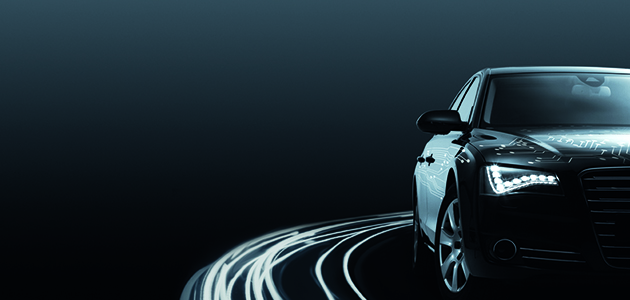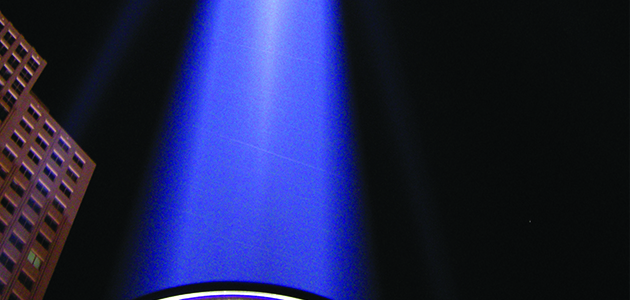
It seems like only yesterday when the new E-Class Mercedes Benz set a pioneering technological new trend by becoming the first car in the world to offer adaptive headlamps developed by HELLA.
Seeing around corners and headlamps that recognise oncoming traffic may seem more Star Trek than real science, but just seven years on, and lighting technology that took the world by storm is now a feature on the more modest A- Class Mercedes-Benz.
It’s a sure sign that the revolutionary lighting technology – previously the preserve of top of the range vehicles – is becoming more accessible to the mainstream. As technological developments in all aspects of life quickly become commonplace, the automotive world has also experienced a swift rise in high-tech advancements, especially in the field of lighting technology.
Intelligent lighting
HELLA’s partnership with Daimler to develop a sophisticated Intelligent Light System (ILS), in conjunction with the adaptive high beam assistant for the Mercedes A-Class, is an example. The system adapts the light distribution to the driving situation, whether in the city, on a motorway or at a junction, therefore providing the driver with optimum visibility conditions.
The equally successful partnership with Audi has also seen full LED headlights fitted into the new Audi A3 while the Audi A6 and A8 boast a new generation of adaptive headlight technologies.

At the forefront of innovation
Achieving milestones is nothing new for HELLA. The company has assumed a pioneering role by pooling its expertise from the fields of light, electronics and thermal management to create new and innovative products. It’s a uniquely strong combination for developing LED lighting systems, which signal the future of automotive lighting technology.
By constantly developing and enhancing the options and areas of applications for LEDs, HELLA is involved in definitively shaping the LED era. Indeed, the company’s lighting credentials are well established.
It is globally recognised as a leading OE manufacturer of vehicle light sets and is perhaps best known for having been at the forefront of developments such as H4, projector (DE) lighting, HID (Xenon) lamps, LED adaptive headlamps and Dynamic Light Assist technology – which utilises intelligent interaction between a camera on the vehicle, powerful image processing software and the latest LED technology to deliver intuitive headlamps.
Rachel Pugh, Product and Brand Manager for Lighting at HELLA comments: “LEDs are replacing conventional light bulbs in more and more vehicles and represent the future for automotive lighting. First of all, they have simply proven themselves to be the better solution with economic and safety- related advantages. Technical benefits include longer service life, minimal energy consumption, higher visibility, and rapid response times. As a lighting pioneer, HELLA has made use of these solutions early on in a broad range of applications.”
Tomorrow’s people
Leaps in lighting technology may be exhilarating, but as the automotive industry welcomes the trend to adopt sophisticated lighting systems across a wider range of vehicles, garages need to be prepared for ever more complex fault diagnosis and repairs.
Whether general servicing and maintenance or, worse still, a front end collision has occurred, headlamp replacement will become a trickier task for the independent garage.
Rachel adds: “Although it will be some years before the advanced lighting systems being introduced into new cars will reach the aftermarket for repair, the crash repair sector is likely to see vehicles coming through within 18 months of the launch of the vehicle.
“What the new technology highlights is the pressing need for garages to invest in diagnostic equipment to increase their capabilities and be able to diagnose lighting faults. As vehicle lighting systems become progressively more complex, technicians are urged to future-proof their business by investing in capable diagnostic equipment.”
The road ahead
As garages and their technicians see lighting systems on vehicles becoming ever more complex, they can be confident that HELLA is committed to developing OE components for the aftermarket sector and, as the driving force behind automotive lighting technology, is well placed to develop and deliver an aftermarket programme to support this.

BEAM ME UP – THE BENEFITS OF THE NEW TECHNOLOGY
LEDs offer three crucial advantages:
1) The light from LED headlamps is closest to daylight. This means that LED light is in keeping with normal human perception patterns. Studies have shown that the closer the colour of artificial light comes to daylight, the less the strain on the eyes. LED light is closer to daylight than xenon light.
2) LEDs are significantly more energy-efficient than regular bulb sets and, depending on the area of application, consume around 75% less power.
3) LEDs last considerably longer than regular bulb sets. At 10,000 hours, the average life of an LED is around five times longer than that of a xenon bulb.









